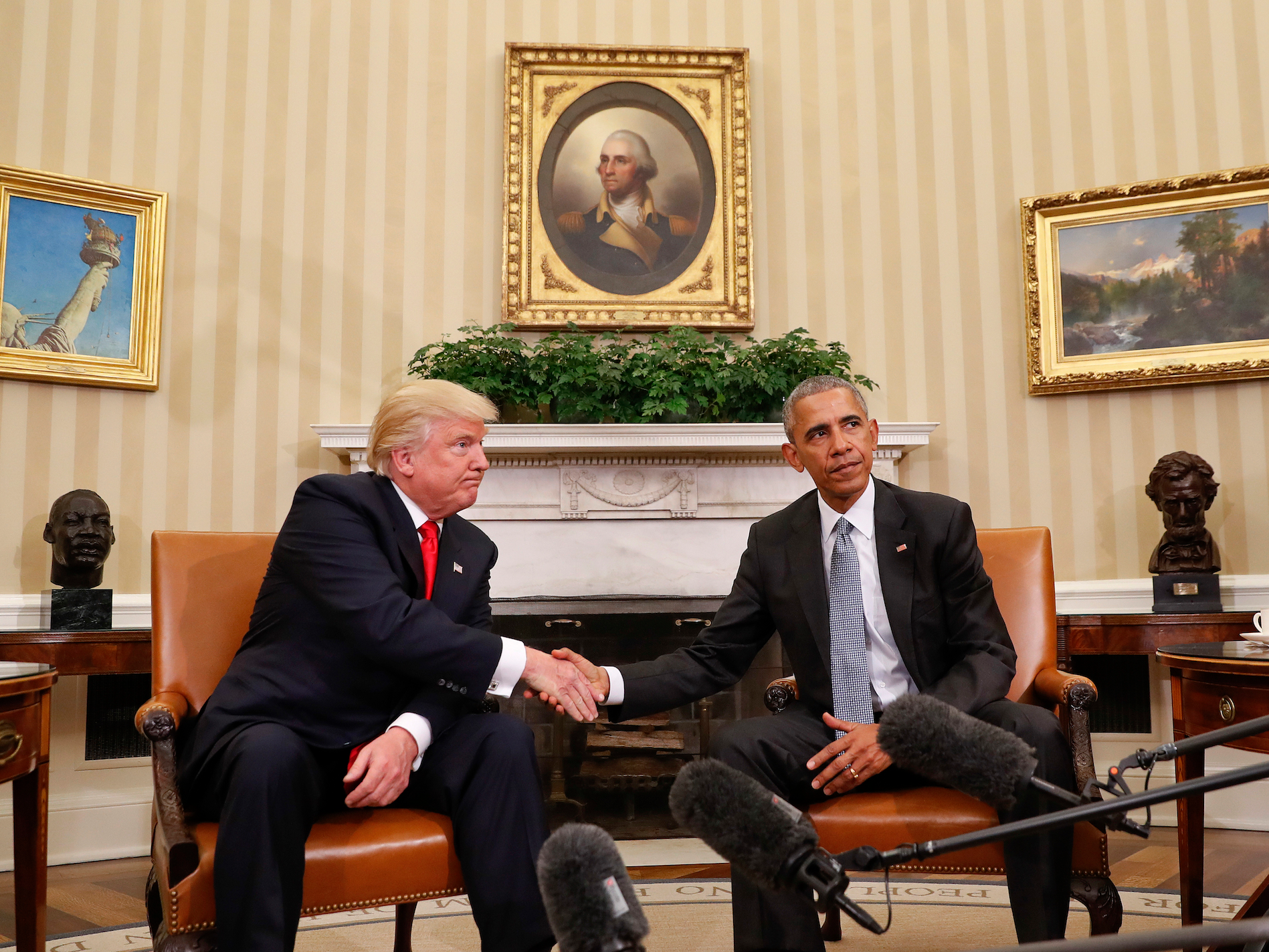- A person’s body language can reveal a lot about what they’re thinking and feeling.
- That’s especially true if their nonverbal displays don’t match what they’re saying out loud.
- For example, a pointed finger with a closed hand can be an attempt at showing dominance, while someone who repeatedly touches their face is probably nervous.
- Visit Business Insider’s homepage for more stories.
Reading other people’s body language is tricky business.
If someone is crossing her arms, for example, you could assume that she’s closed off, when in fact she’s just cold.
Read more: 13 simple ways to get better at small talk
That said, when you notice that a person’s nonverbal displays don’t quite match up with what she’s telling you out loud, it’s worth paying extra attention. Or when someone laughs with one too many wrinkles around their eyes, it’s likely a sign your joke probably wasn’t all that funny to her.
Below, we've rounded up 19 scientific insights into the significance of body language, pulled from Psychology Today, research journals, and a few awesome books.
Read on to find out why you should be cautious if someone's making too much eye contact or has their legs crossed.
The shoulder shrug is a universal signal of not knowing what's going on.

According to Barbara Pease and Allan Pease, authors of "The Definitive Book of Body Language," everybody does the shoulder shrug.
The shrug is a "good example of a universal gesture that is used to show that a person doesn't know or doesn't understand what you are saying," they write.
"It's a multiple gesture that has three main parts," they continue. "Exposed palms to show nothing is being concealed in the hands, hunched shoulders to protect the throat from attack, and raised brow, which is a universal, submissive greeting."
Open palms are an ancient display of honesty.

When someone swears to tell the truth in a court of law, they put one hand on a religious text and raise their other hand into the air, palm facing whoever they're speaking to.
That's because, the Peases write in "The Definitive Book of Body Language," an open palm has been associated with "truth, honesty, allegiance, and submission" throughout Western history.
"Just as a dog will expose its throat to show submission or surrender to the victor," they write, "humans use their palms to show that they are unarmed and therefore not a threat."
A lack of crinkles around the eyes suggests a potentially fake smile.

The jury is still out on whether we can tell when someone is faking what scientists call a Duchenne smile. It's the expression we make when we're genuinely experiencing positive emotion.
At one point, researchers believed that making a genuine smile was nearly impossible to do on command. The smile, they said, was all about the crow's-feet around your eyes. When you're smiling joyfully, they crinkle. When you're faking it, they don't.
If someone's trying to look happy but really isn't, you won't see the wrinkles.
More recently, a study from Northeastern University researchers found that people could do a pretty good job of faking a Duchenne smile, even when they weren't feeling especially happy.
It seems safe to say that if the crinkles aren't there, the person's probably not genuinely happy. But just because the crinkles are there doesn't necessarily mean they're elated.
Raised eyebrows are often a sign of discomfort.

In the same way that real smiles shape the wrinkles around your eyes, University of Massachusetts professor Susan Krauss Whitbourne writes on Psychology Today that worry, surprise, or fear can cause people to raise their eyebrows in discomfort.
So if someone compliments your new hairstyle or outfit with their eyebrows raised, it may not be sincere.
A pointed finger with a closed hand is an attempt at displaying dominance.

If someone is closing their palm and pointing with their index finger, then they're trying to display dominance - though it doesn't always work out.
"The Palm-Closed-Finger-Pointed is a fist where the pointed finger is used like a symbolic club with which the speaker figuratively beats his listeners into submission," the Peases write. "Subconsciously, it evokes negative feelings in others because it precedes a right overarm blow, a primal move most primates use in a physical attack."
If they mirror your body language, the conversation is probably going well.

When two people are getting along, their postures and movements mirror each other's. When your best friend crosses her legs, you will, too. If you're on a date that's going well, you'll both be making the same goofy hand gestures.
This is because we mirror each other when we're feeling a connection, says positive psychologist Barbara Fredrickson.
But if they look into your eyes for too long, they might be lying.

In an attempt to avoid looking shifty-eyed, some liars will purposefully hold their gaze a touch too long, so that it's slightly uncomfortable, according to behavioral analyst and body language expert Lillian Glass.
They may also stand very still and not blink.
Eye contact shows interest — both positive and negative.

When you look someone in the eyes, it sets an arousal state in the body.
"How that arousal is interpreted, however, depends on the parties involved and the circumstances," writes Claremont McKenna College organizational psychologist Ronald E. Riggio.
"Being stared at by a stranger who appears large or ominous can be seen as a threat and elicit a fear response," he continues. "However, the gaze of a potential sexual partner causes arousal that can be interpreted positively - as a sexual invitation."
An expansive pose signals power and a sense of achievement.
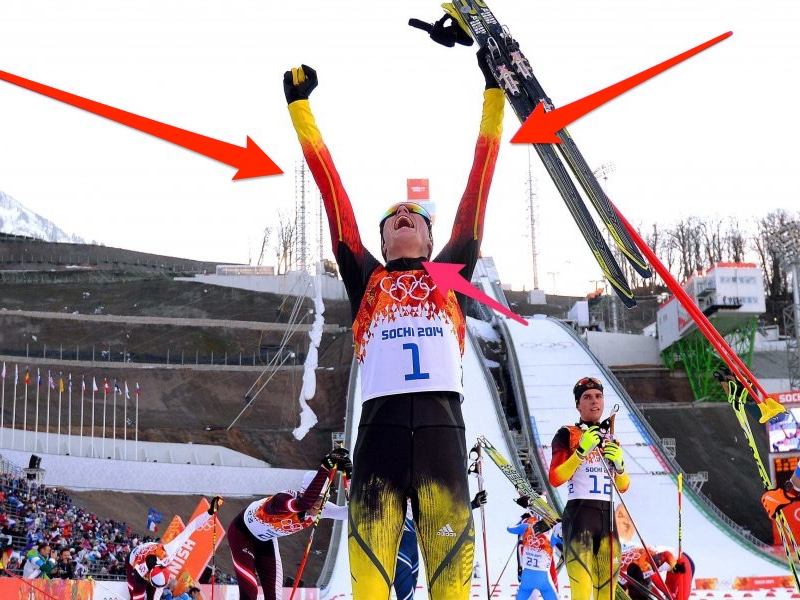
How people hold themselves is a big clue to how they're feeling.
If someone's leaning back and relaxed, they probably feel powerful and in control. In fact, research has found that even people born blind raise their arms in a V-shape when they win a physical competition.
A 'cluster' of gestures shows a real feeling of connection.

Attraction isn't communicated through one signal but a sequence.
Neuropsychologist Marsha Lucas suggests one to watch for: "After making eye contact, she looks down a bit, gathers or otherwise preens her hair, and then looks up at you while her chin is tipped."
Crossed legs are usually a sign of resistance and low receptivity, and are a bad sign in a negotiation.
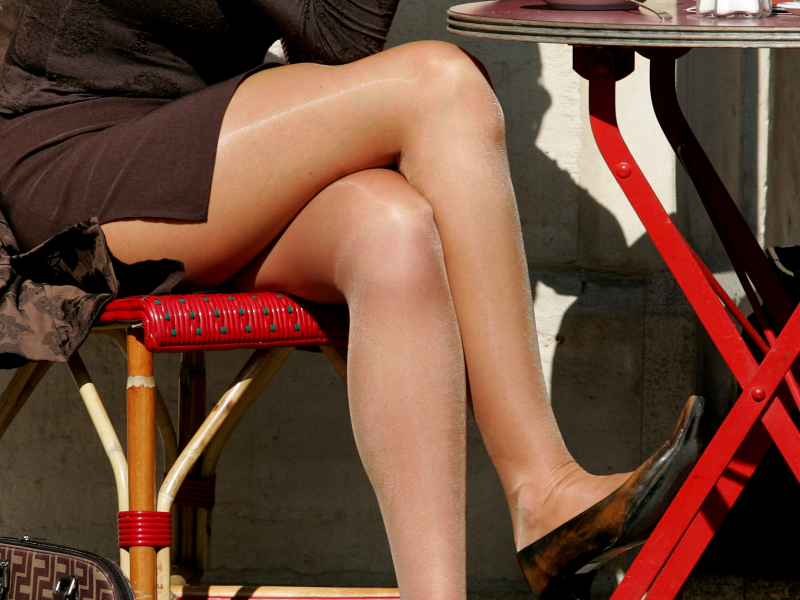
Out of 2,000 negotiations videotaped by Gerard I. Nierenberg and Henry H. Calero, the authors of "How to Read a Person Like a Book," there wasn't a single settlement when one of the negotiators had their legs crossed.
"Psychologically, crossed legs signal that a person is mentally, emotionally, and physically closed off," writes psychologist Travis Bradberry - which may mean they're less likely to budge in a negotiation.
A clenched jaw, tightened neck, or furrowed brow shows stress.
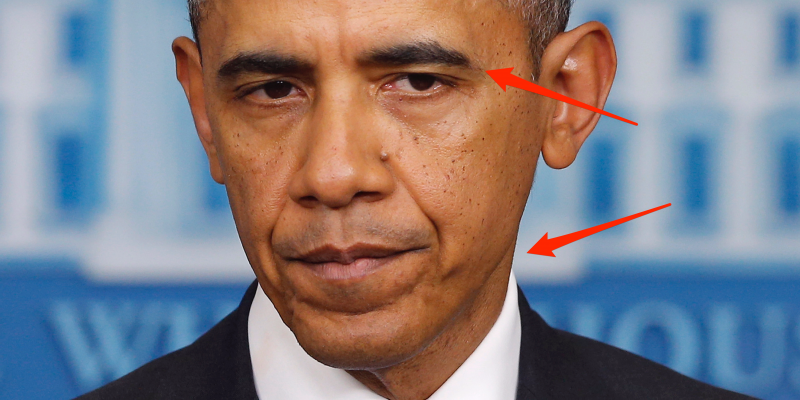
All these are "limbic responses" associated with the limbic system in the brain.
"Emotion, spotting and reacting to threats, as well as assuring our survival, are all heavy responsibilities of the limbic system," writes former FBI counterintelligence agent Joe Navarro.
"The bus leaves without us, and we are clenching our jaws, rubbing our necks," he explains. "We are asked to work another weekend, and the orbits of our eyes narrow as our chin lowers."
Humans have been displaying discomfort this way for millions of years, Navarro says.
If they repeatedly touch their face or their hands, they're probably nervous.

Navarro told Business Insider that we've evolved to display nervousness without using any words.
Some of the most common manifestations of our anxiety? Touching your face and rubbing the skin on your hands. Both can be soothing behaviors when you're feeling uncomfortable.
"It's hilarious how often we touch ourselves under stress," Navarro said.
If they're laughing with you, they're probably into you.

If someone is receptive to your humor, they're likely interested in you.
Evolutionary psychologists say that humor - and positive reception to humor - play a pivotal role in human development. They serve as a way of signaling a desire for a relationship, be it platonic or romantic.
Expansive, authoritative postures show leadership.

Whether they're innate or learned, there are a number of signals and behaviors people use when they feel that they're a leader, or at least are trying to convince you that they are.
They include holding an erect posture, walking purposefully, steepling and palm-down hand gestures, and generally open and expansive body postures.
A shaking leg signals a shaky inner state.

"Your legs are the largest area of your body," University of Massachusetts professor Susan Whitbourne says, "so when they move, it's pretty hard for others not to notice."
A shaky leg signals anxiety, irritation, or both, she says.
A slight smile along with direct eye contact might be an attempt at seduction.

Riggio's research suggests that there's a specific type of smile people display when they're trying to act seductive.
He writes in Psychology Today:
"[T]hey typically display positive affect - a slight smile that accompanies direct eye contact, with a slow glance away, but still holding the smile.
"Interestingly, the seductive smile could be accompanied by submissive behavior (tilting the head downward), or dominant behavior - proudly and slowly glancing away."
If the inner corners of their eyebrows don't move up and in, they're probably not as sad as they seem.
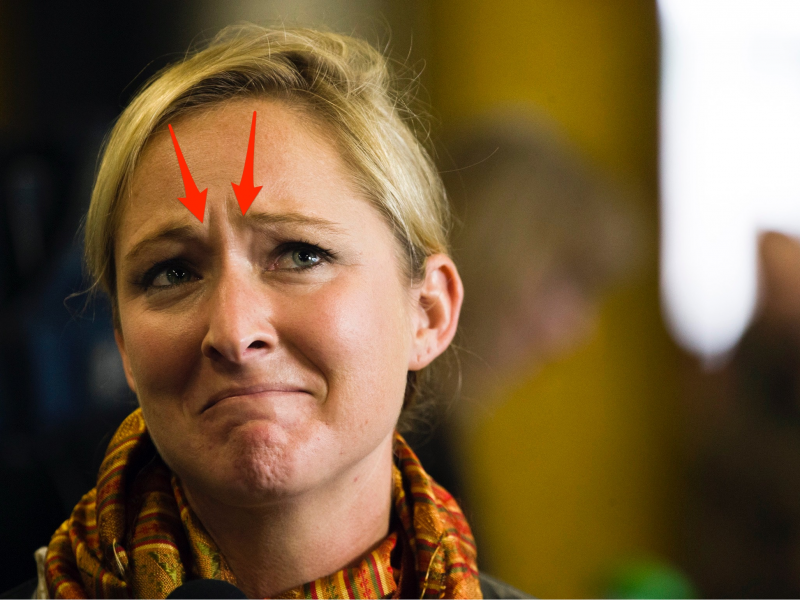
Psychologist Paul Ekman uses the term "reliable muscles" for the muscles in the face that you can't contract voluntarily.
In his book "The Tell," psychologist Matthew Hertstein explains how to apply Ekman's research: "If you observe a person expressing sadness both verbally and facially, but the inner corners of his eyebrows are not going up and in, he may not be experiencing sadness at all. He's unable to contract these muscles voluntarily despite his best efforts."
If one side of their face is more active than the other side, they might be faking the emotion.

Hertstein writes: "The vast majority of facial displays of emotion are bilateral - that is, they show up on both sides of the face equally. ... Next time you tell a joke, look to see if her smile is symmetrical when she laughs."
This is an update of an article originally posted by Drake Baer and Max Nisen.
